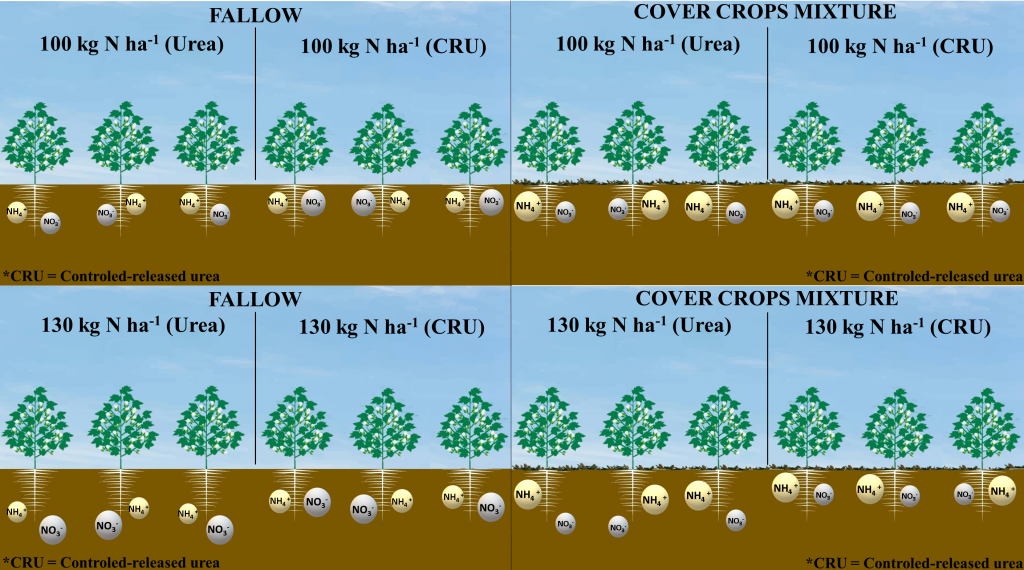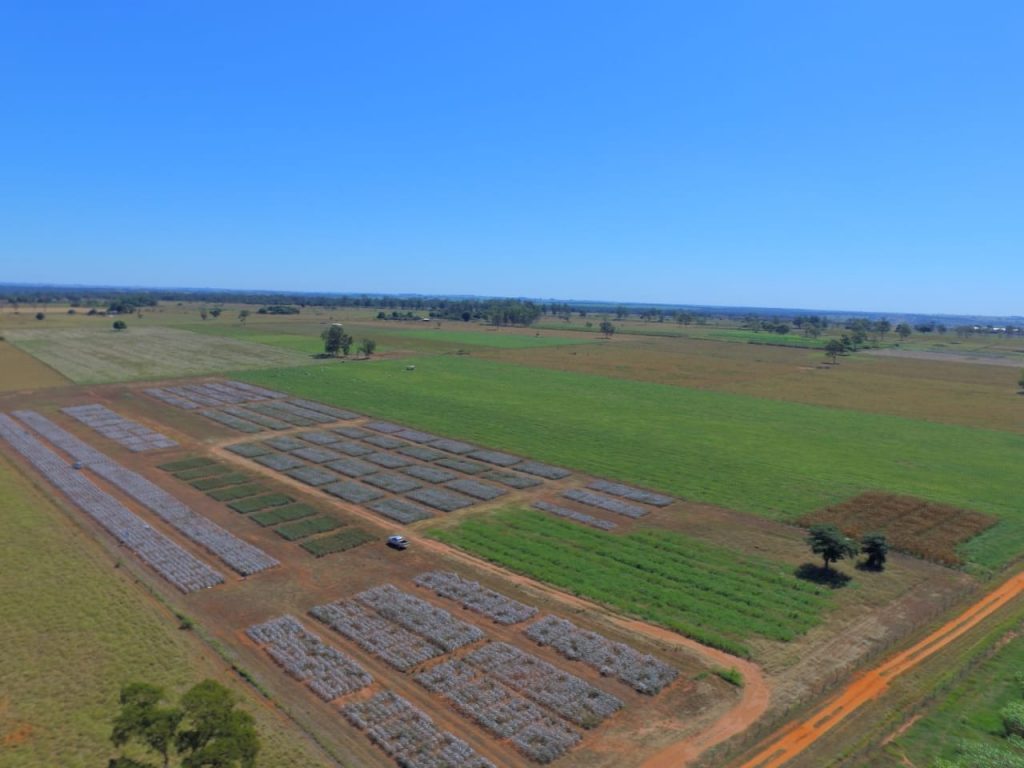Rev. Bras. Ciênc. Solo.2022;46:e0210113.
Cover crops and controlled-release urea decrease nitrogen mobility and improve nitrogen stock in a tropical sandy soil with cotton cultivation
02/Feb/2022
DOI: 10.36783/18069657rbcs20210113
Graphical Abstract

Highlights
Cover crops increase the total N stock in the soil by 17 % compared to fallow.
Controlled-release urea increases the stock of inorganic N by 12 % compared to conventional urea.
Mixtures of grasses and legumes increase ammonium availability.
Combined use of controlled-release urea and cover crops reduces movement of inorganic N.
ABSTRACT
Sandy soil often has low nitrogen (N) stock. Thus, crops grown in sandy soil rely on high levels of N fertilization. The use of cover crops and efficient fertilizers can increase N stock in the soil and N availability in the topsoil, and reduce overall fertilizer costs. The objective of this study was to evaluate the effects of cover crops (fallow, a single grass species (ruzigrass), two grass species (ruzigrass + millet), one grass species (millet) with legumes [lime-yellow pea (2018) and velvet bean (2019)], and a mixture of three cover crops [two grass species (ruzigrass + millet) and one legume (lime-yellow pea (2018)] and velvet bean (2019), N sources (conventional urea and controlled-release urea) and N doses (70, 100 and 130 kg ha-1) on N dynamics in an Oxisol (Latossolo) with sandy texture in Brazil cultivated with cotton. Systems with the cover crops (average) had 17 % more total N stock in the soil than fallow systems. Inorganic N increased only in systems with legumes. The systems with cover crop mixtures had 70 % more ammonium than fallow systems. Systems only with grass species had low percentages of inorganic N in relation to total N in the soil. The increase in N-fertilizer rates augmented the N stock in the soil (total and inorganic). In the first year, controlled-release urea reduced the availability of inorganic N in cotton flowering, except for the system with mixed cover crops. After the cotton harvest, areas of controlled-release urea application had 12 % more inorganic N than the areas with conventional urea. Our findings show that the combined use of cover crops with high biomass production, moderate dose of N and controlled-release N can increase the availability of inorganic nitrogen in the upper layers of the soil in tropical areas with sandy soil and this can reduce nitrogen fertilizer consumption in the medium and long term in cotton fields.
546

